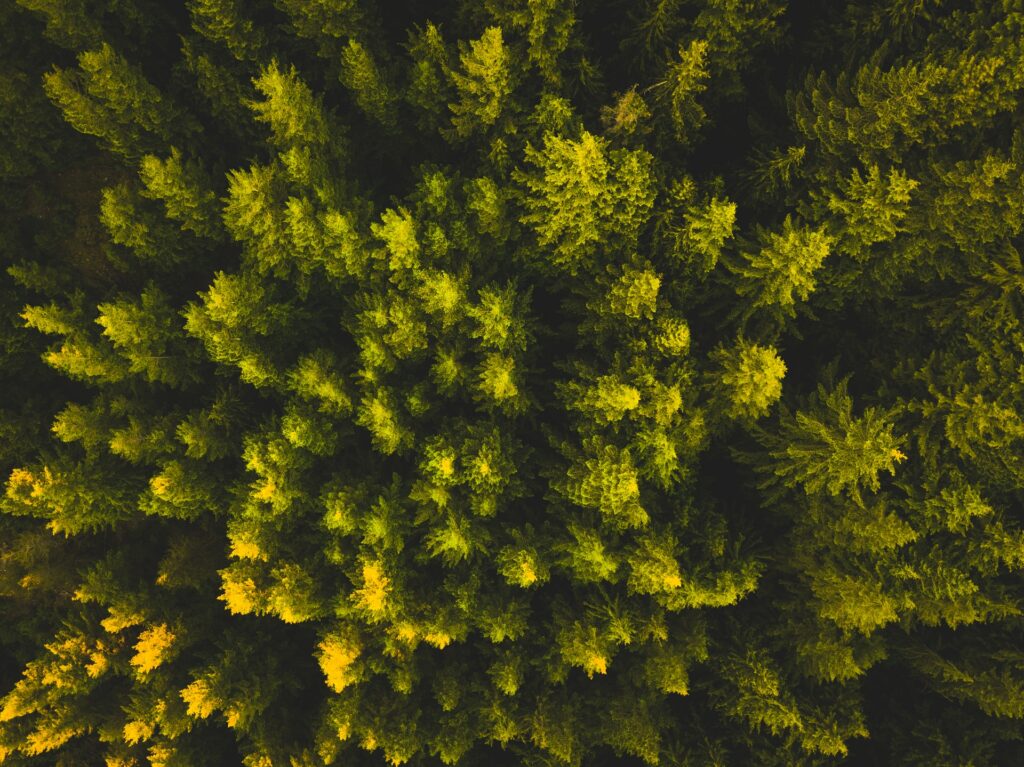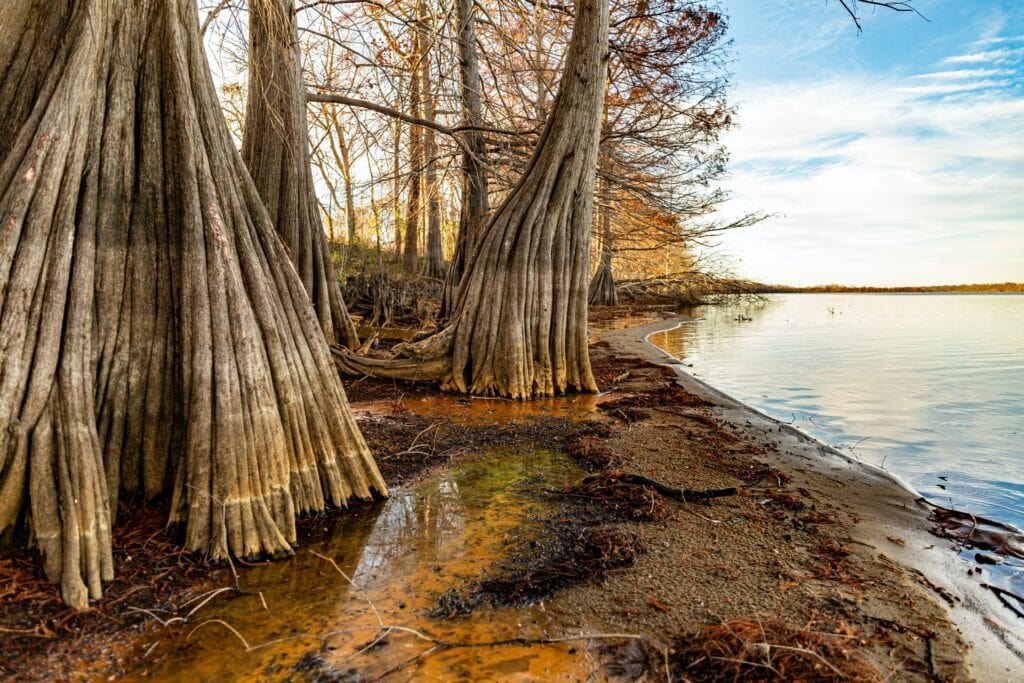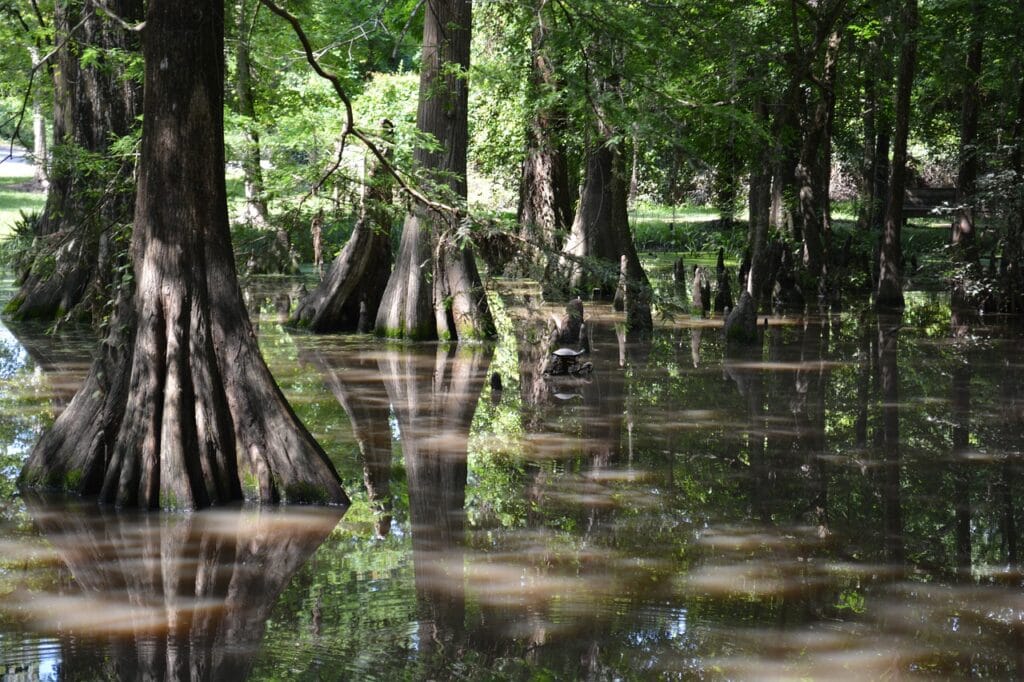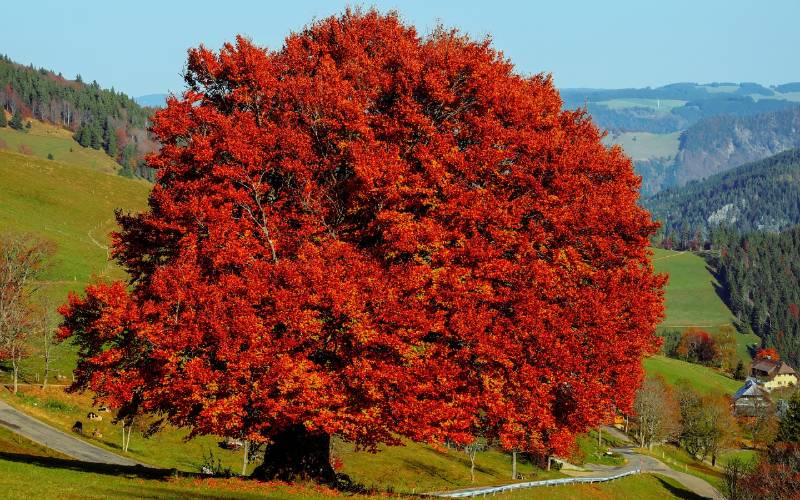2 Types of Cypress Trees in Florida (with Pictures)
-
Rachel Giordano
- Last updated:

Florida is home to two species of deciduous conifers that play an important role in the state’s ecological and economic systems: the Bald and Pond cypress.1 These trees provide food and shelter for wildlife, soak up floodwaters, prevent erosion, and trap and prevent pollutants from spreading. You can find such trees along wetlands and rivers, and some trees in the state are hundreds of years old.
In this article, we’ll explore these two species of cypress trees in Florida and uncover their essential roles.
The 2 Types of Cypress Trees in Florida
1. Bald Cypress Trees

| USDA Hardiness Region | 4–10 |
| Sun | Full sun (6–8 hours) |
| Growth rate | Medium |
| Mature height | 60–80 feet |
Bald cypress trees (Taxodium distichum) shed their needle-like leaves in early fall, and since they drop leaves so early in the season, they earned the name “bald.” Some can grow up to 150 feet tall, but 60–80 feet is the norm, with a spread of roughly 20–25 feet. These trees are low maintenance once established and extend perfectly above water, especially with their root projections or “knees,” which are knob-like protrusions from the ground. The trunks are resistant to rot, and you’ll find them in swamps, along rivers, and stream banks.
Bald cypress trees can also grow on dry land, and they provide shade and beautiful landscaping, but they do best in wet areas. Bald cypress trees grown on dry land will not develop “knees.”
A drawback is that they are susceptible to insects and a fungus called blight. These conditions are more prone to affect the tree in drought situations and poor fertilization.
- Can grow to 60–80 feet
- Trunks resistant to rot
- Provide shade
- Makes for beautiful landscaping
- Not resistant to insects
- Susceptible to fungus in drought conditions
2. Pond Cypress Trees

| USDA Hardiness Region | 5–11 |
| Sun | Full sun/partial shade |
| Growth rate | Slow |
| Mature height | 45–60 feet |
The pond cypress (Taxodium ascendens) is smaller than the bald cypress with a 10–15-foot spread. The Pond cypress can grow 12 feet in 3 years, and it has long, green needles that turn a brownish-copper color in the fall. The needles fall off completely in winter.
These trees are insect and disease resistant, and you can find them in ponds, swamps, or wherever there is standing water. The pond cypress also has knees, much like the Bald cypress, but only in wet areas. These trees can adapt to dry land and make for beautiful landscaping in yards because of their slow growth rate, and they grow best in poorly drained or moist soils. No pruning is required if you plant this tree in your yard for landscaping.
Ensure you plant this tree far from your home’s foundation because the root system could cause problems. However, these trees rarely have root problems in dry conditions.
- Insect and disease resistant
- No pruning required
- Makes for beautiful landscaping in yards
- Slow growth rate for landscaping in yards
- Drought tolerant
- Possible problematic root system
What Are Deciduous Conifers?
Deciduous conifers are trees that have both needle-like leaves and cones that shed in the fall. In the fall, the Bald cypress turns a beautiful tannish-orange color, and the Pond cypress turns a coppery-brown color.

What’s the Difference Between the Two Trees?
Now that we’ve examined these two species of cypress trees, let’s break it down a little further.
Both trees are very similar, and there is some debate on whether they are their own species, but the general consensus is that these two trees are two different species. Both trees are cone-shaped, but it’s almost impossible to tell them apart at young ages.
One way to tell them apart is that the pond cypress’ needle-like leaves point upward from the twigs, and the bald cypress’ needle-like leaves are in a horizontal position. The pond cypress has more scale-like features on the needles than the bald cypress.
Another distinction is that the pond cypress can tolerate acidic soils, whereas the bald cypress will have either stunted growth or will not grow in acidic soils.
Bald cypress trees are much bigger than the pond cypress, and the bald cypress prefers water in flood-like conditions. With the size difference and growth preferences, the pond cypress makes for better landscaping in yards due to its drought tolerance and shorter height.
Conclusion
Both trees offer benefits to the state of Florida, such as providing homes with abundant wildlife, improving water quality within Florida’s environment, and preventing flooding. If you ever come to the state of Florida, you will most certainly find these cone-shaped trees, especially in wetlands. Cypress trees can live hundreds of years, with some as old as 500 years of age throughout the state, and they are the most flood-tolerant trees in the state.
We hope you’ve enjoyed our article about these two fascinating trees, and the next time you’re in Florida, you’ll now know how to differentiate the two.
Featured Image Credit: spencer-watson, Unsplash
Contents

